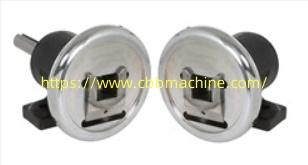CBBMACHINE Overview: Choosing the Right Safety Chuck for Your Line

In modern web guiding and roll-to-roll systems, the Safety Chuck plays a vital role in supporting shafts while enabling fast and secure loading and unloading of material rolls. It is a mechanical component designed to ensure both operational safety and efficient performance, especially in high-speed or continuous production lines.
Safety chucks are often installed at both ends of a shaft and are responsible for transmitting torque from the drive to the shaft. When the chuck is closed, it locks the shaft securely in place. This locking mechanism prevents shaft slippage and reduces downtime caused by manual adjustments or accidental dislodging during operation. The chuck’s design makes it easy to open and close quickly, helping operators save time during reel changes and minimize the risk of injury.
There are two primary types of safety chucks: flange-mounted and foot-mounted. Flange-mounted models are usually fixed directly to a wall or machine frame, while foot-mounted options come with a base for easy positioning on the floor. Both styles offer efficient torque transmission and excellent durability, though the choice between the two often depends on specific space and installation requirements.
Maintenance is another important factor that contributes to the long-term functionality of these components. Regular inspection of the wear parts, such as the insert holders and jaws, ensures that the chuck operates properly and does not pose a safety risk. Worn inserts can lead to improper shaft support or uneven torque transmission. Replacing inserts is typically straightforward, and many chucks are designed for easy part replacement without removing the entire unit from the machine.
When choosing this kind of component, key factors to consider include torque capacity, material type (such as steel or aluminum alloy), mounting options, and compatibility with existing shafts and machines. Proper selection and installation not only enhance workplace safety but also improve the consistency and efficiency of the entire production line.
The evolution of web-handling technology has further enhanced the role of these components. Some advanced versions now include locking indicators or sensors that alert operators when the chuck is not properly engaged, reducing human error. These upgrades are especially valuable in automated environments where downtime and faults must be minimized.
In conclusion, this mechanical device offers an optimal blend of safety, efficiency, and ease of operation for applications in printing, packaging, textiles, and beyond. It provides reliable shaft support and reduces operational delays, making it a critical part of many industrial systems. To learn more about these systems and their applications, visit https://www.cbbmachine.com/news/industry-news/safety-chucks-function-types-maintenance-and-more.html






